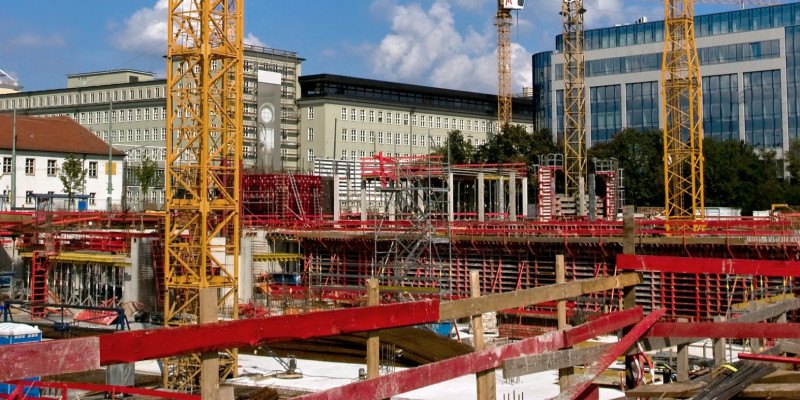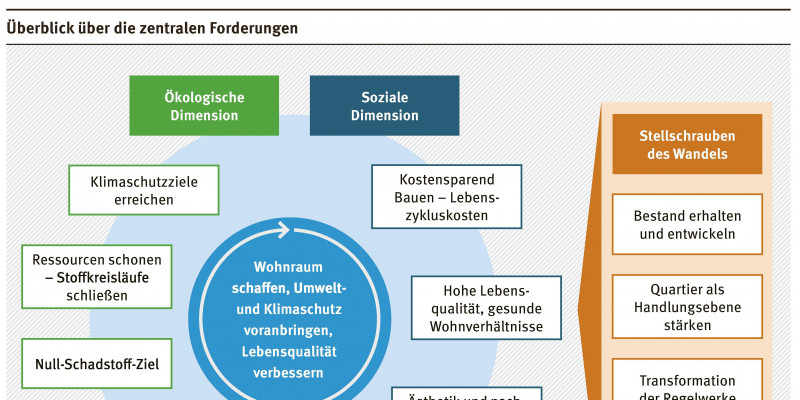Federal Environment Minister Steffi Lemke: “Water depletion and heat as a result of the climate crisis are putting cities and their residents under stress. We need climate-resilient cities with smartly planned blue and green infrastructure in which water and urban greenery is present for nature and people to recuperate. When it comes to urgently needed housing, we can protect the environment and climate at the same time. Given the building sector’s enormous demand for resources, we must give equal consideration to creating housing, saving resources and to climate change adaptation. If new housing is built primarily in inner cities and on brownfield sites and existing buildings are modernised and adapted, we can save energy, waste and greenhouse gases and reduce land take.”
Klara Geywitz, Federal Minister for Housing, Urban Development and Building: “Building and climate action must always go hand in hand and keep social aspects in mind. To forego climate standards in building today – whether it is a conversion, extension or a new building – is already unviable in the short term and will harm future generations. We need a new approach. We must shift our focus away from primary energy consumption to a life cycle approach to new build and the building stock which takes account of total greenhouse gas balance. We are already implementing this with the Quality Seal Sustainable Building (QNG). With the upcoming municipal heat planning as an important component of the heat transition and the upcoming major amendment to the Building Code, which will take up many of the proposals from this study, we are planning further necessary steps to the three-plan approach ‘Building – Climate Action – Social’ ('Bauen - Klimaschutz - Sozial').”
UBA President Prof. Dr. Dirk Messner: “In addition to the urgently needed new construction, we must focus more on conversion and repurposing of existing buildings. If we do not, we will miss our climate and resource protection targets in the building sector by a huge margin. The socio-ecological transformation of our cities calls for a paradigm shift. Creating new housing in existing buildings saves raw materials and protects the open landscape from further urban sprawl. We also need to recycle and reuse far more building materials.”
Dr. Matthias Lerm, head of the urban planning agency of Magdeburg and Prof. Christa Reicher, chair of KNBau: “We are also calling for anchoring the new three-plan approach to infill development in urban planning. This means that urban planning of the future must not pit the three pillars of compact building, healthy urban greenery and sustainable mobility against each other. If today's car park courtyards become house gardens again, it must go hand in hand with suitable mobility alternatives, i.e. enhanced public transport and sharing services as well as additional bicycle lanes and pedestrian areas. If more compact and space-saving buildings are to be built instead of small-scale and dispersed ones, then intensively usable playgrounds and green corridors with a positive impact on the climate must also be included in the projects."
The KNBau recommends an adaptation of the Model Building Regulation and various Land building codes in order to reduce greenhouse gas emissions and the consumption of raw materials in the building sector. In future, the regulations should be oriented towards ambitious sustainability criteria and, for example, provide for the conservation of resources and grant priority to existing buildings over new ones. They should also anchor supportive framework conditions for the use of especially green building materials, as well as allow reduced minimum distances for photovoltaic systems on roofs. Furthermore, legal frameworks in Land building codes should be expanded to include standards for precautionary measures against health and environmental hazards.
 Click to enlarge
Click to enlarge

